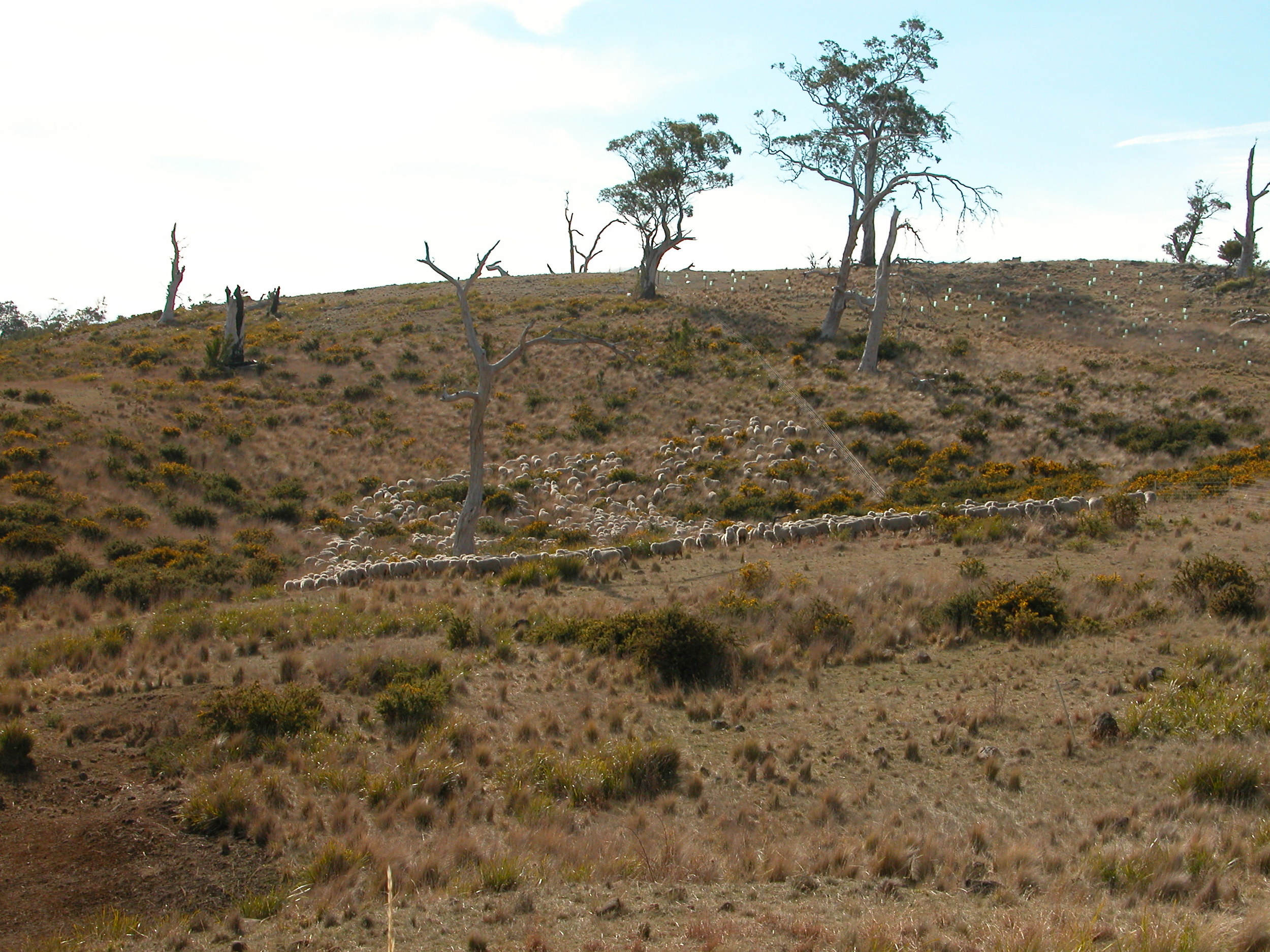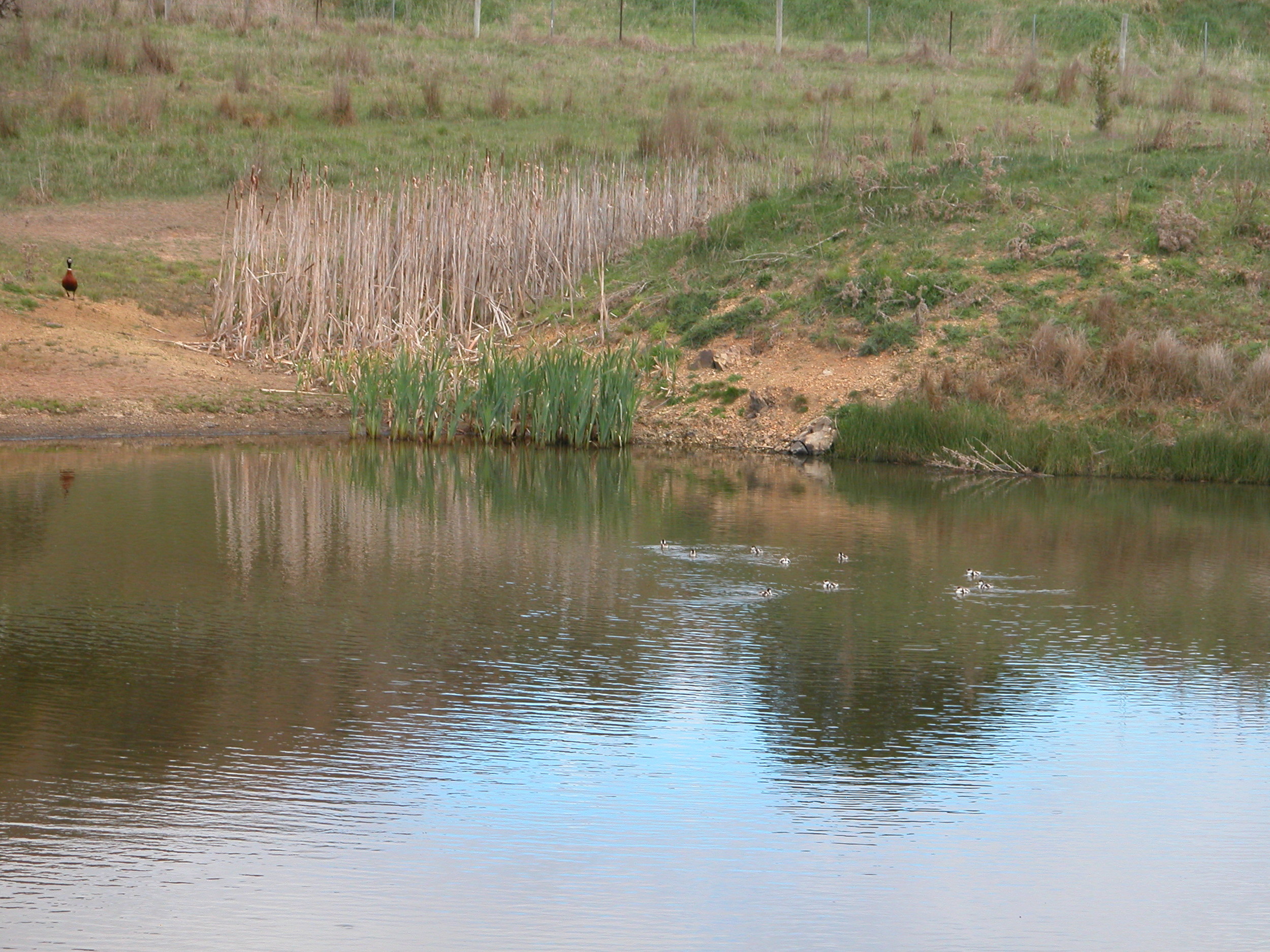Not the religious sort, more the “uh, duh” sort. Wikipedia describes this kind of epiphany as “an enlightening realisation that allows a problem or situation to be understood from a new and deeper perspective”. Sounds better than “uh, duh”, huh? It started a few months ago, though I didn’t recognise it for the turning point it has turned out to be. I’d head off to go shepherding, thinking, “Gee it would be good if the sheep would graze...” a specific spot. And there they would be, grazing it before I was in any way involved in the decision. I remember thinking, “Hm. It’s almost like telepathy.” That was a weird enough thought to go through a lapsed physicist’s brain to make me reject it more or less instantly. But it kept happening.
The breakthrough moment came on a shepherding day not long after I returned from my trip to NZ. We were working a long, narrow reserve with long, rank grass and heavy gorse, especially in a steep-sided little gully mid-way along. The conditions are almost textbook for “sheep won’t graze here”—the sheep equivalent of “Here Be Monsters”. I wanted the sheep to graze northeast through the gully and up the hill on the far side. The wind was favourable (remember, sheep will preferentially walk into the wind and uphill, except, of course when they don’t, and there seem to be many reasons not to follow the rules, not all of which have been revealed to me.)
Chance I and were sitting comfortably on the hill to the south west of the flock, resting after eating our lunches, and in my case, drinking my cup of tea. We were probably 500 m away from the sheep, and not putting any active pressure on the flock. They knew we were there, of course, but our presence only really served as notice that heading back where we’d come from was not going to be easy. (I should say here, we have a couple of times lost the “force-field” battle in exactly these types of circumstance, where the sheep declined to continue in what I had fondly hoped was the forward direction.)
To my utter surprise, over the next half an hour, the flock made its way through the dense gorse and long grass, through the steep and weedy gully and up the hill. Into the wind. As I gathered my wits, the epiphany hit me over the head: the sheep have learned what I’ve been trying to teach them for 18 months. I suspect high school teachers would feel equally astonished when their unruly, hormone-laden students grasp a concept that has been dangled in front of them for months.
All this time, I was so focused on getting the sheep to trust me and accept my leadership, it simply never dawned on me they were really learning from me, from the shepherding process, how to feed themselves well on our property. I use “our” deliberately here, because they now “own” it, in the sense of knowing it thoroughly, as much as I do.
And, hot on the heels of the initial epiphany, came the next one: it was time for me to trust them, as they have come to trust me. Time to trust their judgement about what to eat, when, and how to find what they need.
The final bit of epiphany took a few minutes longer: honestly, I don’t need fences any more to “control” the way the sheep graze. I only need fences to protect new plantings of trees until they are mature enough to take care of themselves in a grazing context. But all the other fences are really for me, to help me feel in control. They aren’t there for the sheep, nor are they needed, now that the sheep know what they are doing and are prepared to search out forage over the whole property.
One of those fences I don’t really need…Making a U-turn at the end of the Lucerne Paddock. This was today’s shepherding, getting them to graze down the lucerne (alfalfa) on one side of the fence, to the bottom end near the yards, and then a U-turn into the other side of the paddock, to graze back the other way. Worked beautifully–everybody followed the leader around the bend, with no one trying to break back along the fence line on the near side. I’m working on getting the flock to graze the annual grasses (barley grass and spear grass) that fill in the spaces between lucerne plants. While the annuals are perfectly good forage, once they’ve gone to seed, the seeds will get in the wool, and even eyes, of the sheep, so there’ll be no more lucerne grazing for a few months after the next week or so.
I stopped short of calling up my fencing guy and asking him to take down all the fences he put up for me last year, at considerable expense. But I did reconfigure the way I allow the flock to graze, opening up all the gates in a large section—a third to half—of the property at a time. I still shepherd, but in between the days I’m out there, I’m trusting the flock to work the grazing circuits the way they need to. And they are. Time and again I’ll think, “Next shepherding day, maybe I should take them…”, only to see them there before I get a chance to.
Despite the desperately dry spring (no rain in October at all, and only 16 mm in September) the native plants are doing what they do so well–adapting to the vagaries in the climate they’ve evolved with. This is a tiny orchid I’ve not seen before on the property–common golden moths (diuris chryseopsis). Along with them, convulvulus, cut-leaf daisies, pussytails, everlastings, and new holland daisies are out in profusion. Just goes to show–we need to treasure our native ecosystems–they will be what allows us to adapt to climate change. They’ve been doing just that for ages. Literally.
The sheep work these large sections as a flock, moving slowly and gently from one area to another, the leaders pulling the rest of the flock through gates, almost never leaving anyone behind. In some of the more complicated fencing configurations there are as many as a dozen or more gates to be navigated in a section. Other than one sheep who got his head stuck in a fence, I have yet to find any stragglers left behind. (I still check.)
I’m not completely sure how this will play out going forward, though there are some aspects I’m confident about. First, I will never have to teach the whole flock these lessons again, as each new generation will learn from the older ones. Second, shepherding will become more of a meditative exercise for me than one of control. The illusion of control, and a desire to feel in control, I’ve decided, is a source not only of anxiety for the human involved, but inevitably results in more work for her.
******************
Some good news, and some sad: Sis, my 15-year-old border collie, had to be put to sleep a couple of weeks ago, with kidney failure. She did surprisingly well right up to the end—went for the morning stroll with the rest of us and had breakfast the day she died. A week or so ago, the rest of the dogs and I scattered Sis’s ashes at “Sis’s Corner”, the place along the track where she’d wait for the rest of us to come back from the long haul part of the day’s run.
The swans have gone walkabout with the cygnets—I’m guessing there just isn’t enough water in Swan Lake to make it a viable place to raise their babies. Fingers crossed they’ve made it safely (walking, because it’s way too early for the kids to fly) to a bigger, better waterhole.
On a happier note, a clutch of mountain ducks (Australian sheldrakes) has replaced the swans on Swan Lake. I found them this morning—10 little beauties.
And this year’s wool clip is sound! You may remember (Sweetness and Light, December 2014) I had trouble with last year’s ewe wool being “tender”—a result of a nutritional change during summer last year as I was just starting to figure out rotational grazing. Happily, no such problem occurred this year—they grew lots of wool, 16.5 to 17.5 micron, with excellent tensile strength (48 to 52 Newtons per kilotex, or thousand fibres, for those of you who like numbers) compared with 37 last year. All in all, one of the best clips I’ve ever had. I credit all the shepherding for getting them through a tough, tough year without any dramas. 3000 kg of White Gum greasy wool is due into Lyttleton Harbour, near Christchurch, NZ in a day or so.










